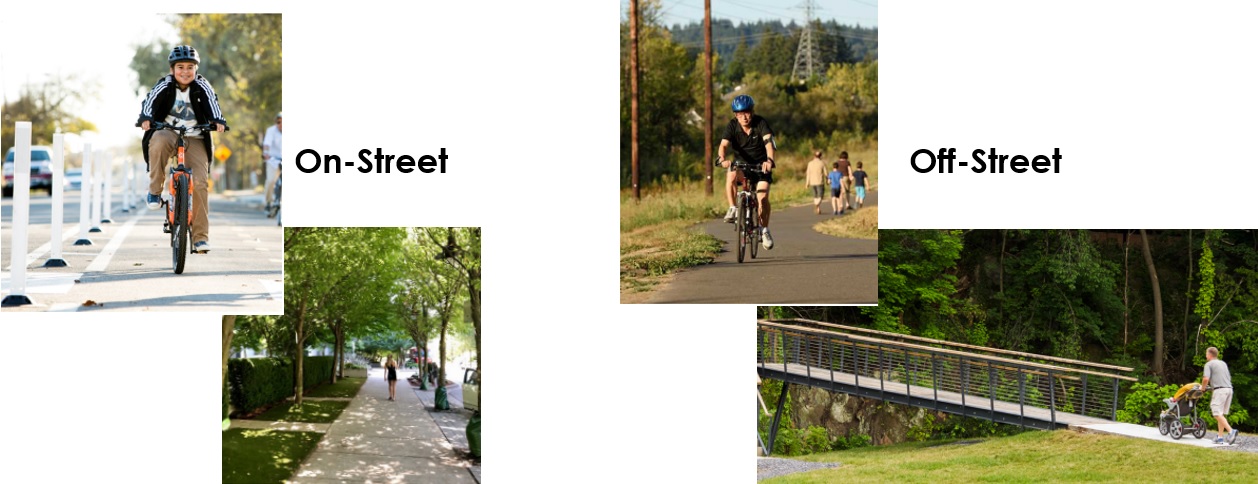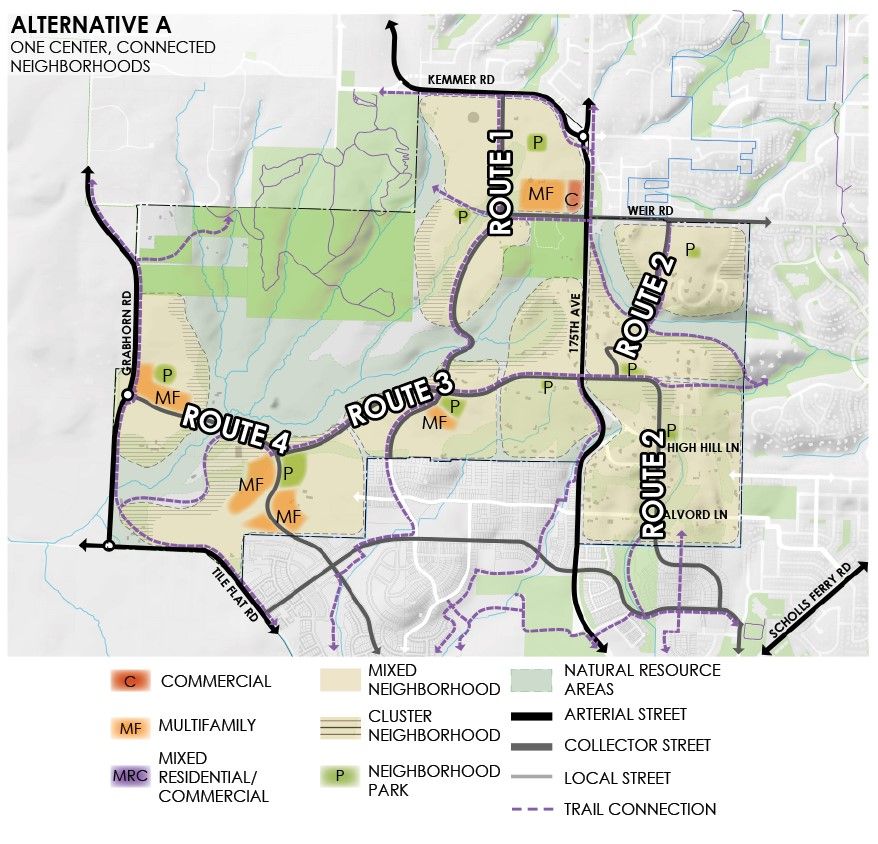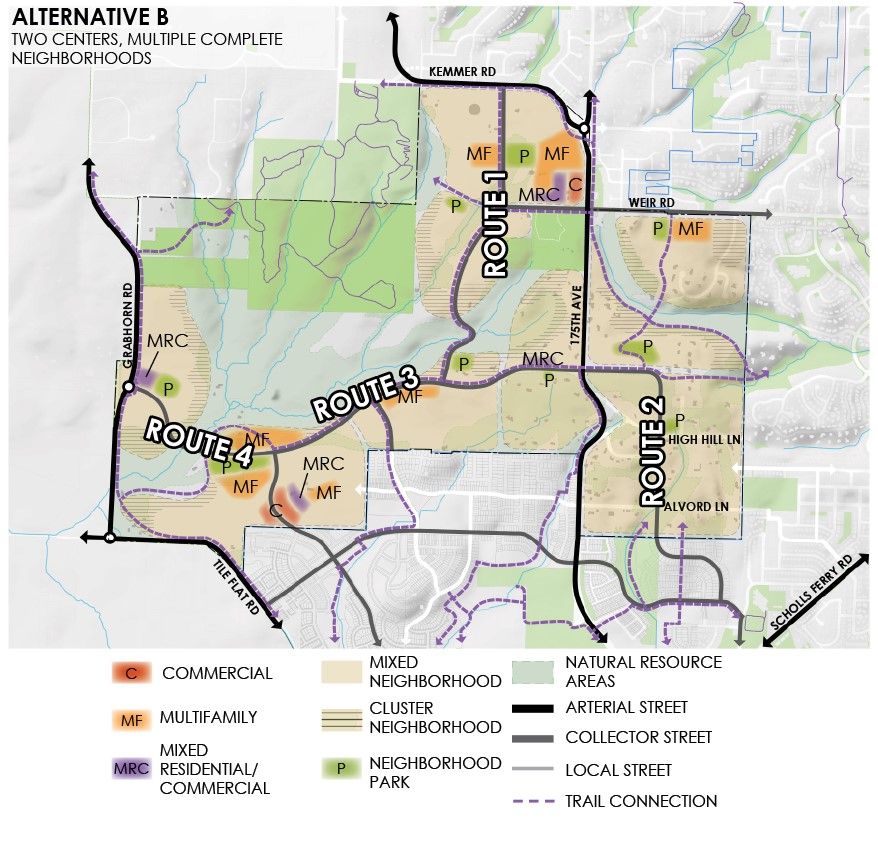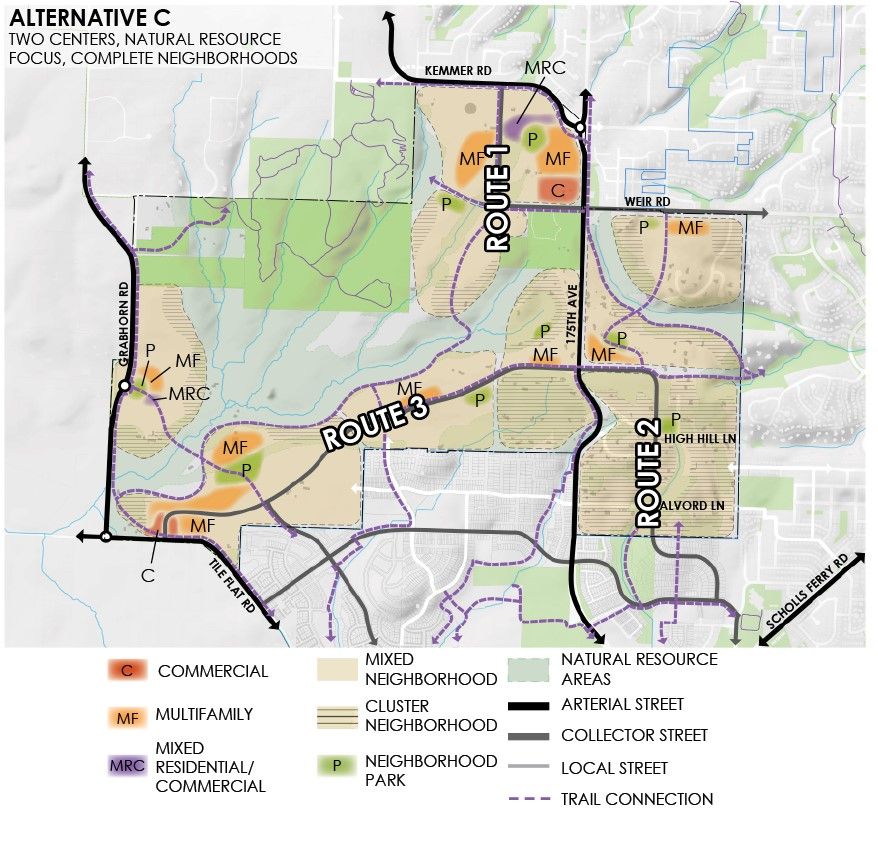The images below are examples of on-street and off-street bicycle and pedestrian paths.

Making Cooper Mountain "Transit Ready"
The Cooper Mountain Community Plan is an opportunity to plan land uses, community destinations, streets, and paths so that transit service can best serve the area for years to come. Beaverton supports this goal because it provides additional travel options, supports greenhouse gas reduction, and helps create an inclusive and welcoming community.
Tri-Met already has plans to eventually extend Line 56 to Mountainside High School. To make the remainder of the area ready for transit, the alternatives:
- Focus housing density, shops, and services in specific areas to create transit destinations.
- Connect streets to support bus routing.
- Strive to provide safe and comfortable routes and bus stops for pedestrians.
We’re also planning to create “mobility hubs” – places where people can easily access bike/scooter rental and ride share pick-up near bus stops.
Collector Routes
The larger streets in the study area are known as arterial streets – this includes SW 175th Ave, SW Tile Flat Road and SW Grabhorn Road. They carry primarily “pass-through” traffic. In all alternatives, they will have 3 or more lanes, sidewalks and/or multi-use paths, and bike lanes.
The alternatives include options for collector roads – shown below as Routes 1, 2, 3, and 4. These future collectors are intended to carry primarily local traffic and would be 2 or 3 lanes and have sidewalks and/or multi-use paths and bike lanes. The potential collector routes shown below are an initial framework for the purposes of evaluating the alternatives. Each neighborhood would also have 2-lane streets (known as neighborhood routes and local streets) that would help people get to their homes, local businesses, and other destinations.
The alternatives vary in their level of connectivity, impact on the arterials, and impact on wetlands, creeks, and forested areas. Each alternative has trade-offs. For example, Alternative A reduces dependence on SW 175th Ave by providing parallel north-south collector roads. Alternative A also has a higher environmental impact due to the bridges needed to cross the creeks.
Please note that where collector roads are not present, off-road pedestrian and bicycle connections (including bridges over the streams) would be built.
Collector Roads
| Alternative A |
Alternative B |
Alternative C |
 |
 |
 |
| |
|
(Click to enlarge.)
|
- Least traffic on SW 175th Ave.
- All neighborhoods connected by collector roads.
- Highest environmental impact - 3 roads cross creeks.
|
- Moderate traffic on SW 175th Ave.
- Most neighborhoods connected by collector roads.
- Moderate environmental impact - 2 roads cross creeks.
|
- Most traffic on SW 175th Ave.
- Fewest neighborhoods connected by collector roads.
- Lowest environmental impact - no new stream crossings.
|
Please note that all questions have been disabled and are in read-only mode.